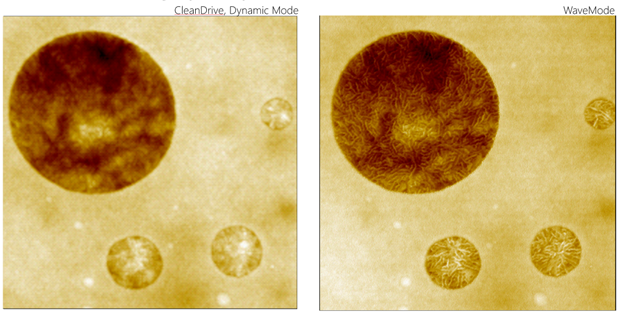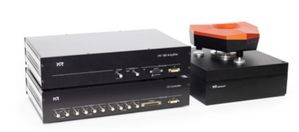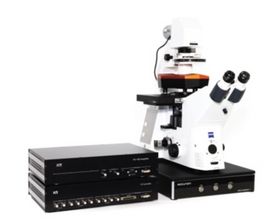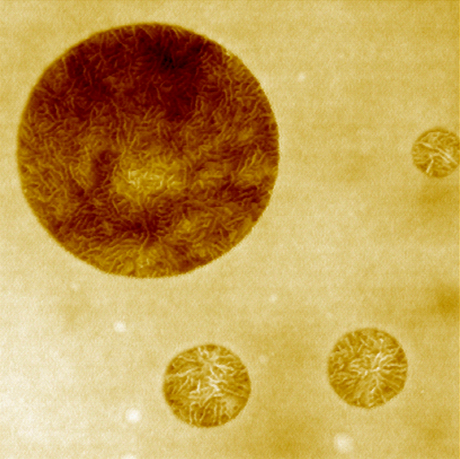Off-resonance tapping mode
Off-resonance Tapping Mode (ORT) – WaveMode
A special operation mode, referred to as off-resonance tapping (ORT) mode, oscillates the cantilever at frequencies well below the resonance frequency and was invented in 1997. It provides a fast, tuning-free, stable, and consistent imaging mode of surface topography in a mode of operation that is similar to force spectroscopy, albeit faster. The cantilever or sample is oscillated in a sinusoidal motion instead of the conventional triangular motion in spectroscopy. As a result, a trigger to stop the slope towards the sample as in spectroscopy cannot be used, and a more AFM-typical feedback loop is used, maintaining a constant, maximum interaction level of the oscillation. Because it is an off-resonance mode, no cantilever tuning to find a resonance peak is required. The modulation can be performed by a piezo, but this limits the maximum oscillation rate to typically less than 10kHz. By using photothermal ORT-excitation (PORT), this tapping rate can be further increased to rates above 100kHz. Depending on sample and scan size, PORT enables acquisition speeds in the two-digit line rate, translating to an acquisition time of under 30 seconds for a typical 256 x 256-pixel image using conventional cantilevers.

In PORT the tip-deflection vs time follows the sinusoidal path denoted by the blue curve. Once close to the surface, at the lower part of the curve the tip touches and the deflection deviates from the sinusoidal form. The difference between the white and the blue curve is proportional to the force experienced by the cantilever: Where the white curve is higher than the blue, it is repulsive, below attractive. Plotting this difference against the blue oscillation curve allows to reconstruct a conventionally looking force curve. Particularly in air or with stiffer cantilevers also in fluid, when the cantilever loses contact with the surface this will set the cantilever into a damped oscillation. In the right curve this oscillation is omitted for clarity of the graph.
PORT is available for DriveAFM as WaveMode. An example of the advantage of the quality of topography images provided by PORT in air is shown below in the height images collected both by WaveMode and dynamic mode. The polymeric structure of the sample can be reversibly compressed by off-resonance tapping, thus creating a crispier image of the polymer in a straightforward way, whereas the dynamic mode images at resonance show the volume of the polymers including side chains.

While PORT in air can be used to squeeze a sample in a controlled way, in fluid the forces can be controlled at the lower limit level, allowing to image delicate samples that would be displaced when imaged at resonance, like virus capsids or DNA tripod assemblies.
The DriveAFM and WaveMode
The DriveAFM is an innovative AFM platform: a tip-scanning atomic force microscope (AFM) that combines, for the first time, several capabilities in one instrument to enable novel measurements in materials and life sciences. The DriveAFM overcomes drawbacks of other tip-scanning instruments and provides atomic resolution together with fast scanning, fast force spectroscopy, and large scan sizes up to 100 µm. Thanks to Nanosurf’s innovations in optical beam path engineering and scanner design, the Drive scan head features photothermal actuation and full motorization for superior research performance and is easy to use for researchers at all levels of experience.
- CleanDrive: stable excitation in air and liquid
- Ultra-low noise
- Direct drive: high-resolution imaging and large scan area
- Fully motorized system: full control via software
- WaveMode for fast and high-res reliable imaging
- Electric and Magnetic Characterization Modes
- Advanced Force Spectroscopy and PicoBalance
 |  |
| DriveAFM stand-alone setup | DriveAFM inverted optical microscope setup |


